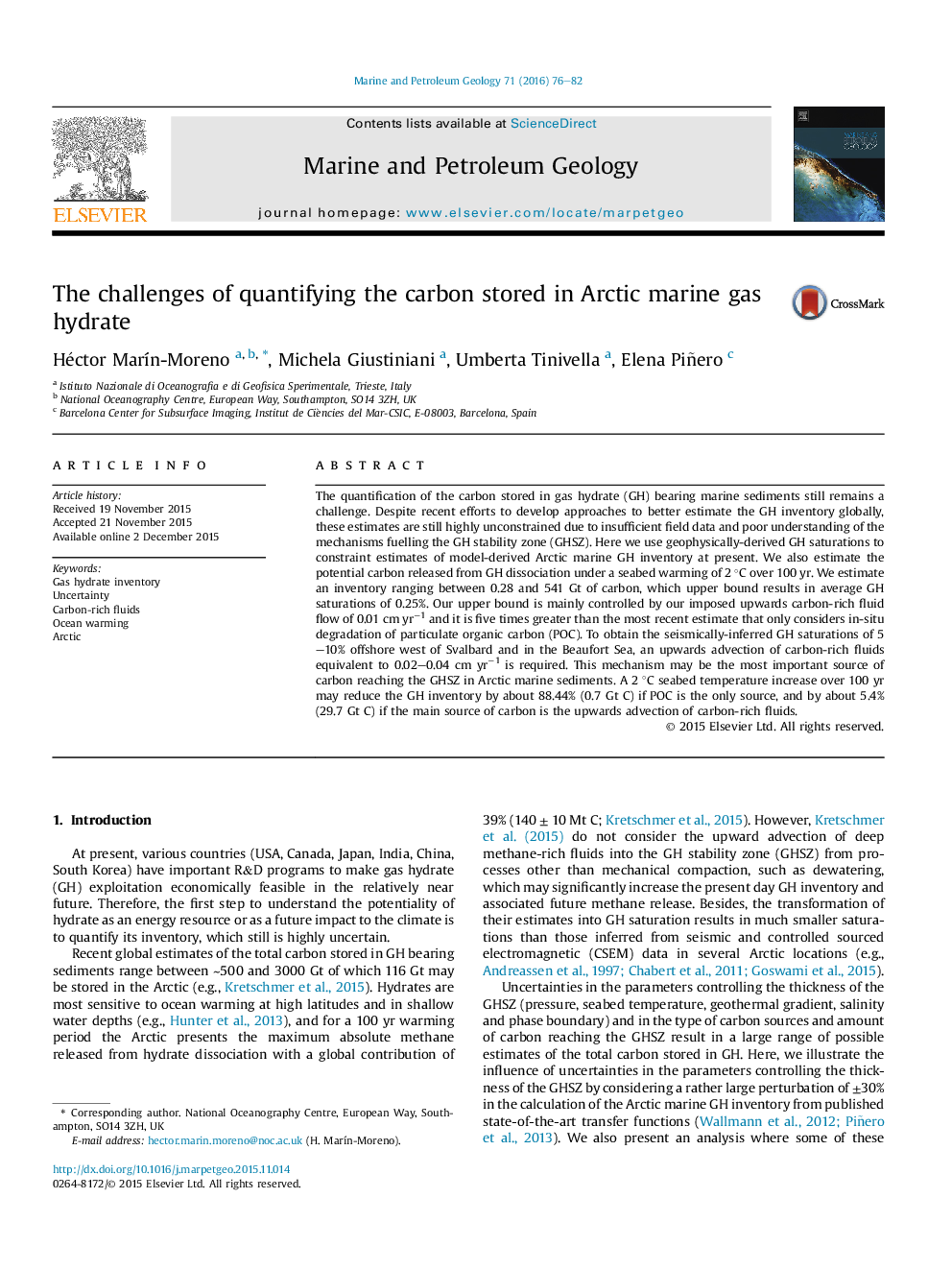| Article ID | Journal | Published Year | Pages | File Type |
|---|---|---|---|---|
| 4695411 | Marine and Petroleum Geology | 2016 | 7 Pages |
•The amount of carbon stored in hydrate below the Arctic Ocean remains uncertain.•A function for the fluid flow that gives observed hydrate saturations is proposed.•Arctic marine gas hydrates likely form by upwards-advection of carbon-rich fluids.•Equivalent fluid flows of 0.02–0.04 cm yr−1 result in hydrate saturations of 5–10%.
The quantification of the carbon stored in gas hydrate (GH) bearing marine sediments still remains a challenge. Despite recent efforts to develop approaches to better estimate the GH inventory globally, these estimates are still highly unconstrained due to insufficient field data and poor understanding of the mechanisms fuelling the GH stability zone (GHSZ). Here we use geophysically-derived GH saturations to constraint estimates of model-derived Arctic marine GH inventory at present. We also estimate the potential carbon released from GH dissociation under a seabed warming of 2 °C over 100 yr. We estimate an inventory ranging between 0.28 and 541 Gt of carbon, which upper bound results in average GH saturations of 0.25%. Our upper bound is mainly controlled by our imposed upwards carbon-rich fluid flow of 0.01 cm yr−1 and it is five times greater than the most recent estimate that only considers in-situ degradation of particulate organic carbon (POC). To obtain the seismically-inferred GH saturations of 5–10% offshore west of Svalbard and in the Beaufort Sea, an upwards advection of carbon-rich fluids equivalent to 0.02–0.04 cm yr−1 is required. This mechanism may be the most important source of carbon reaching the GHSZ in Arctic marine sediments. A 2 °C seabed temperature increase over 100 yr may reduce the GH inventory by about 88.44% (0.7 Gt C) if POC is the only source, and by about 5.4% (29.7 Gt C) if the main source of carbon is the upwards advection of carbon-rich fluids.
